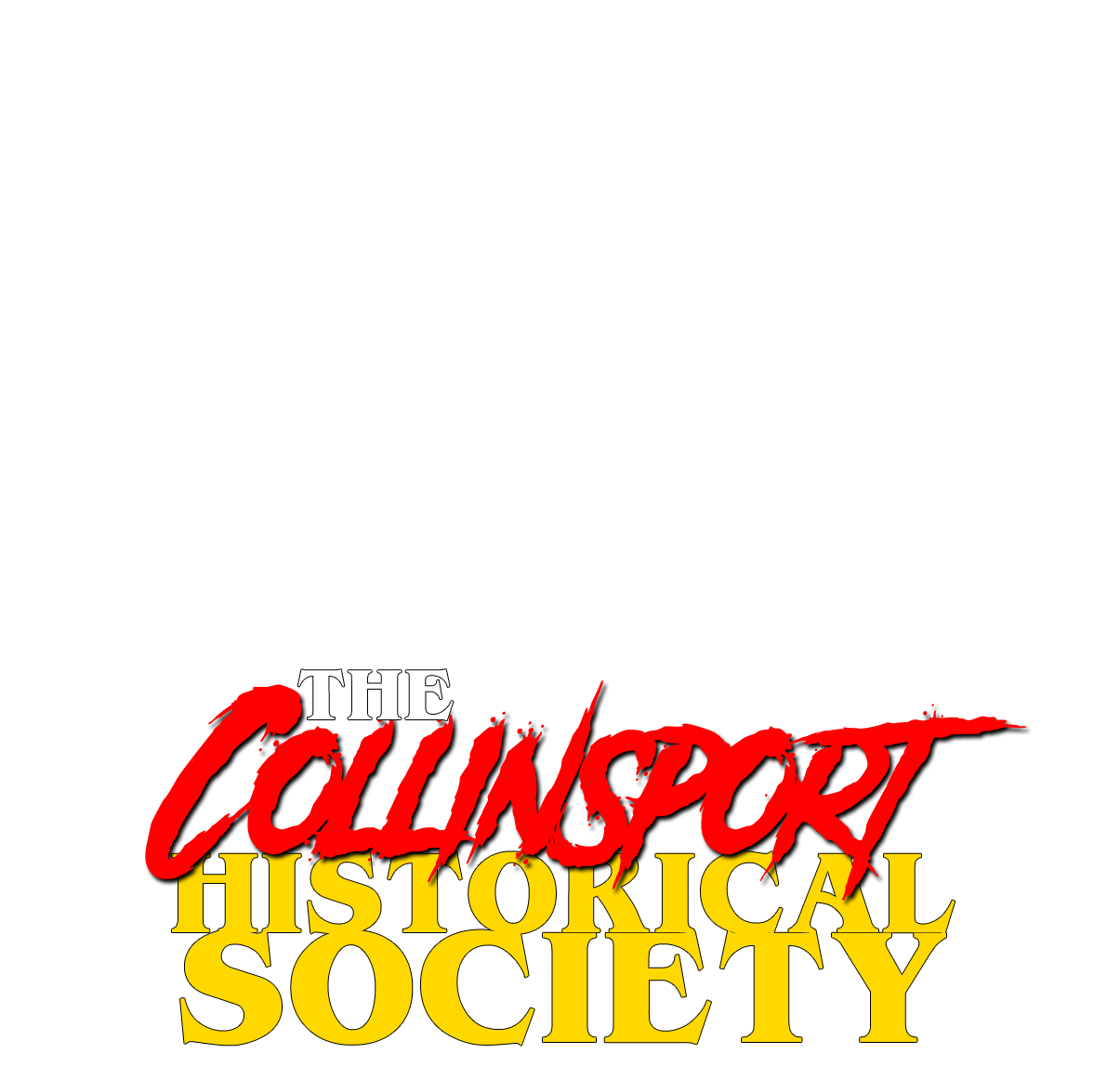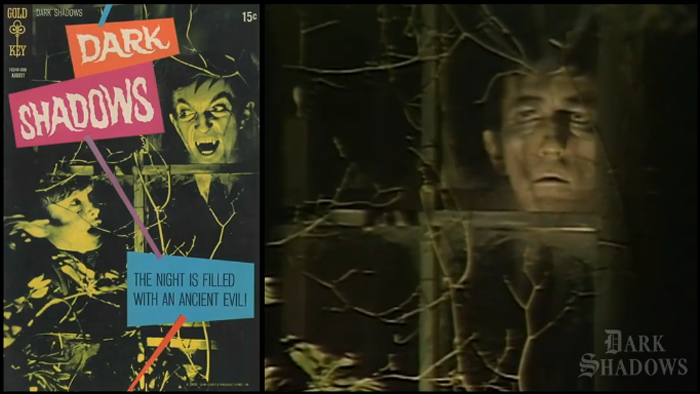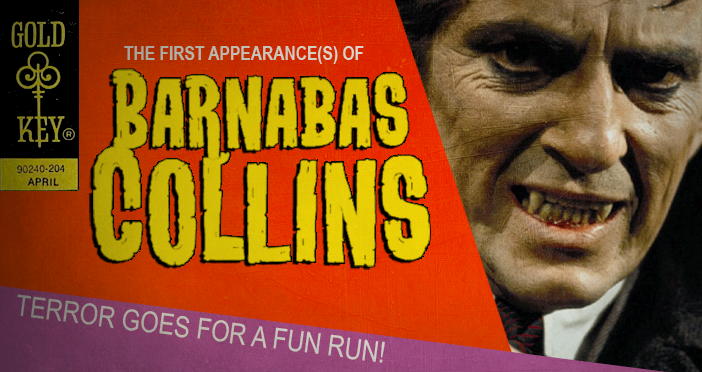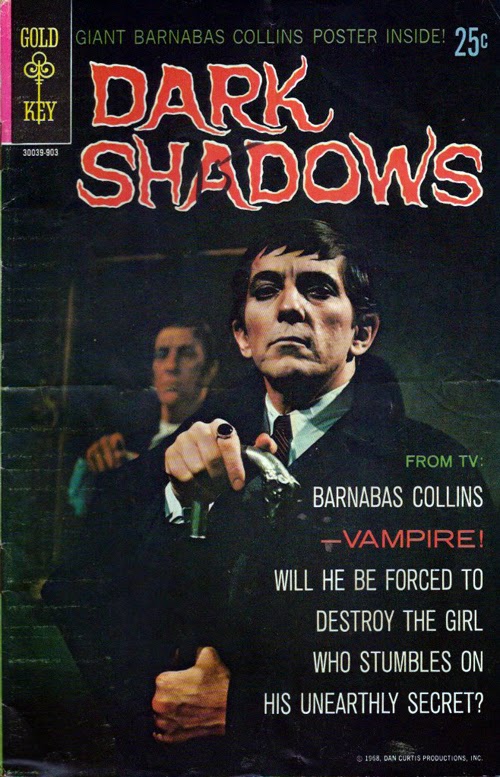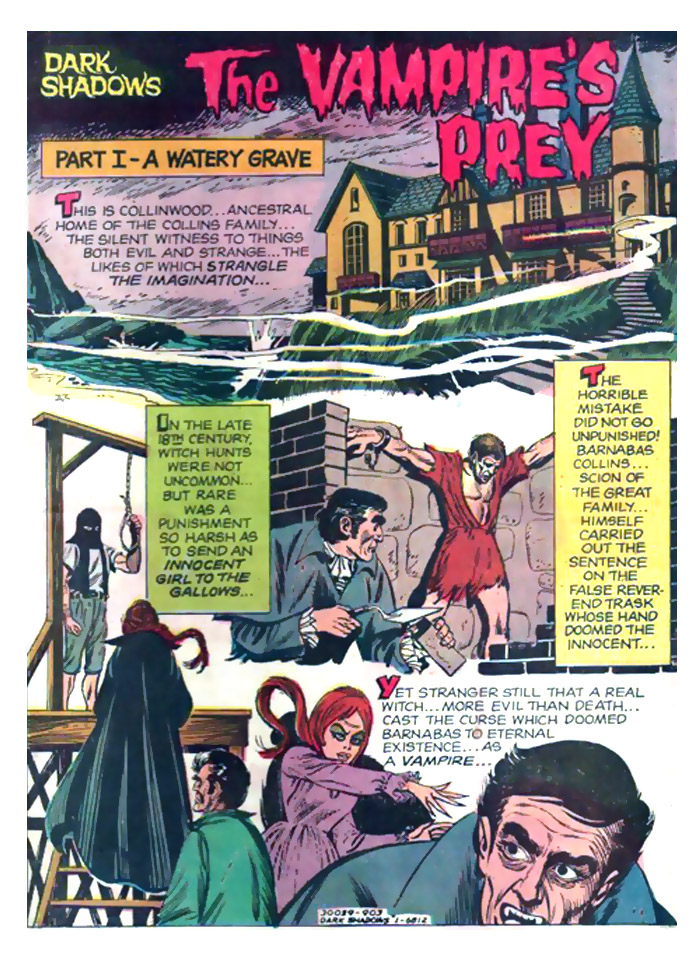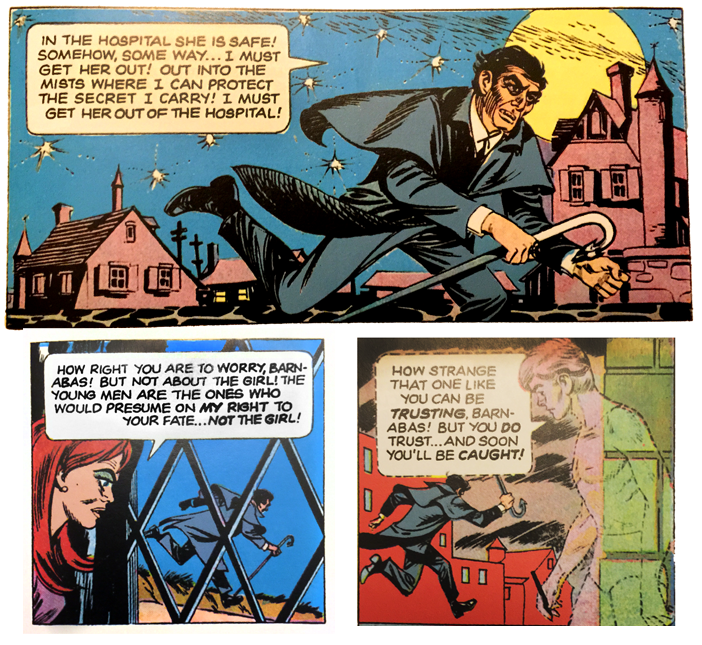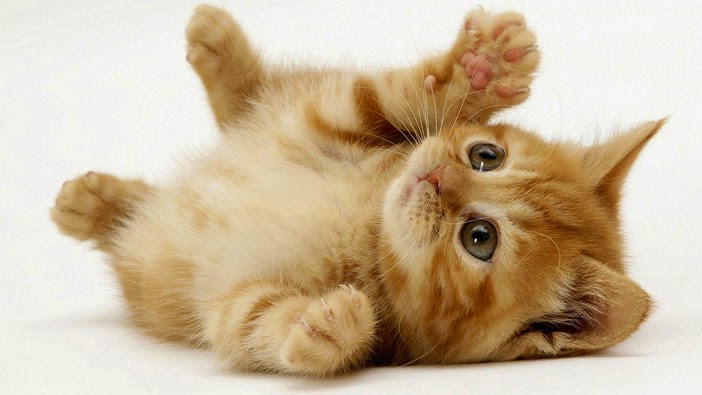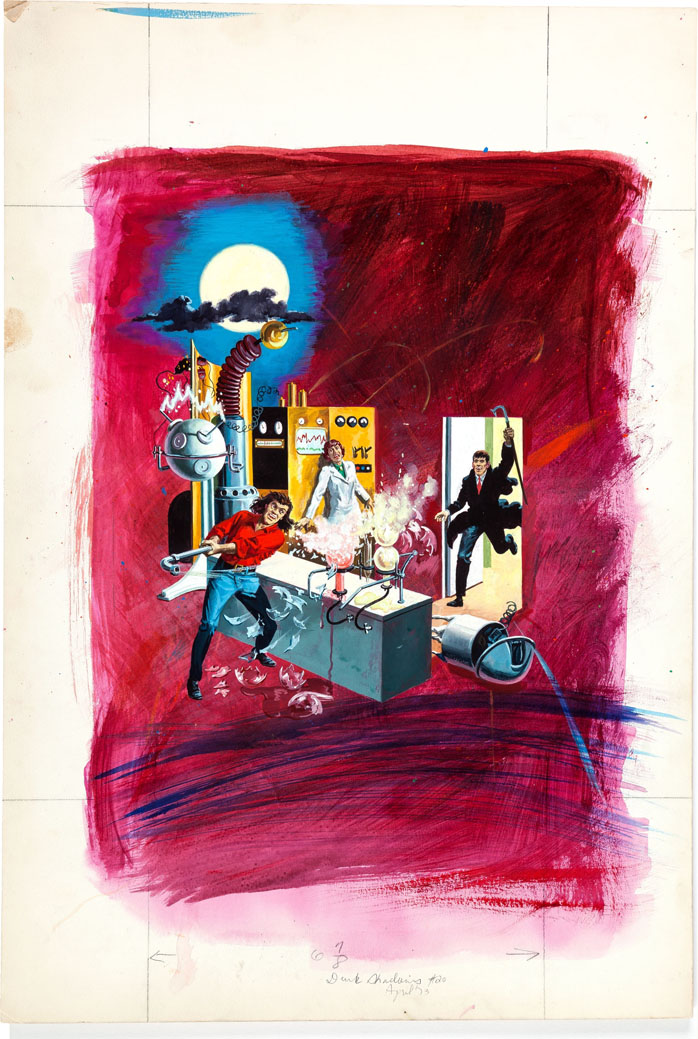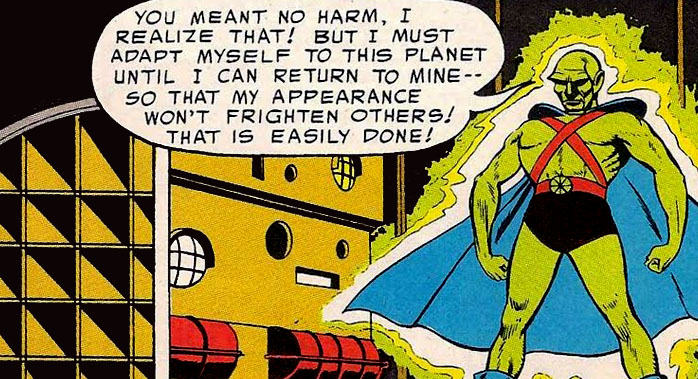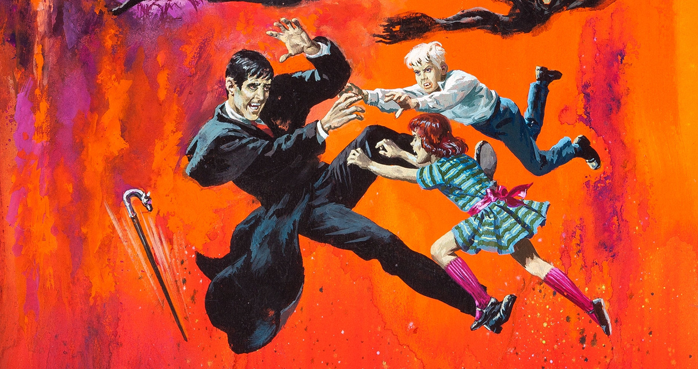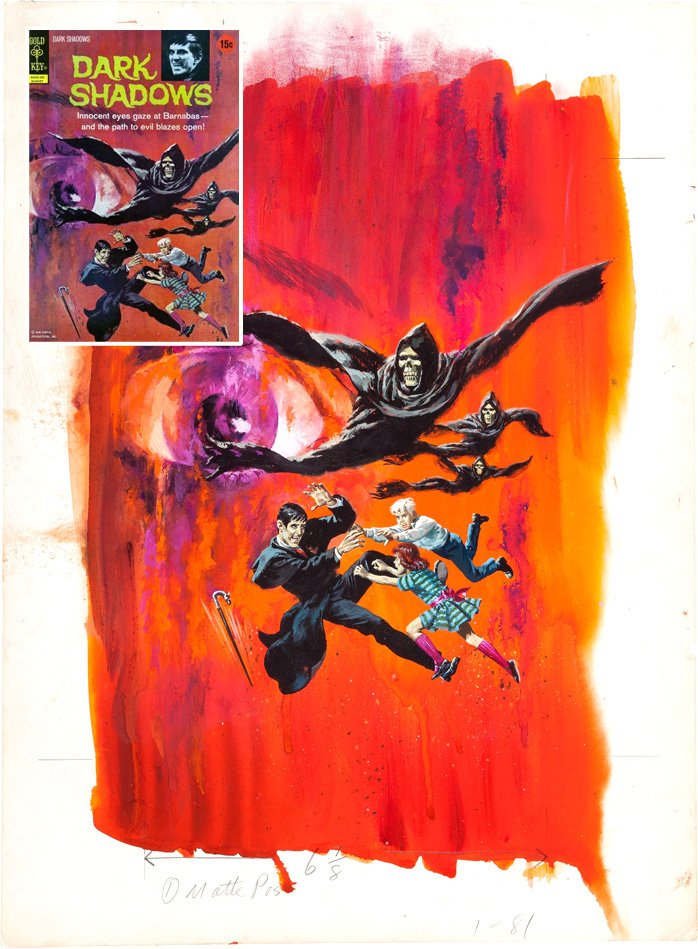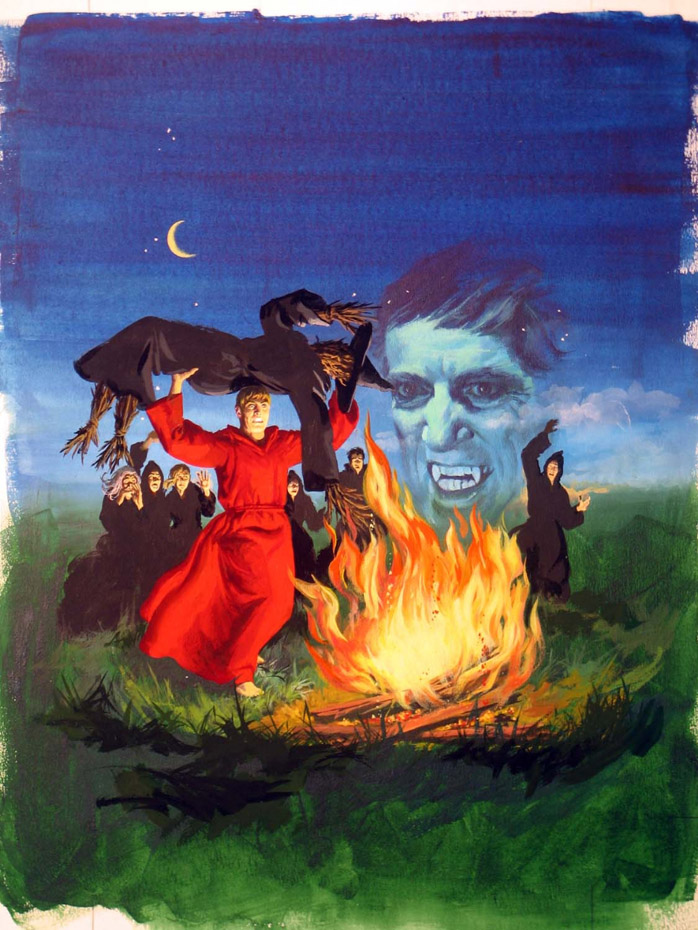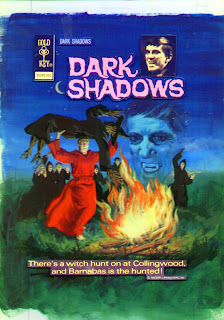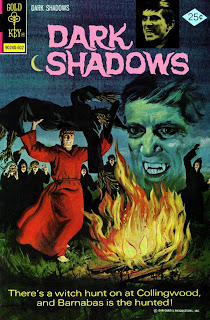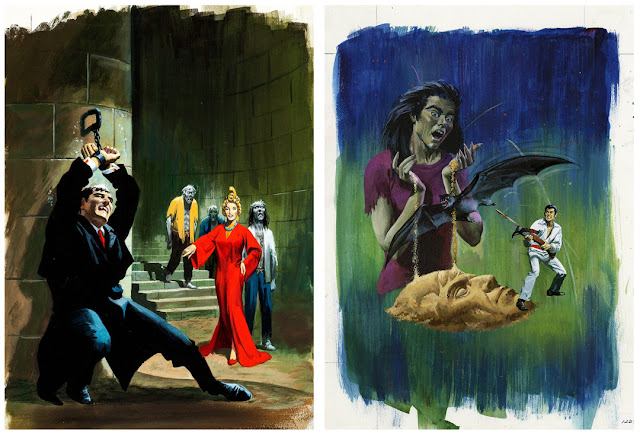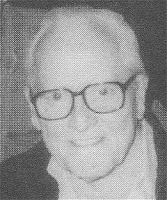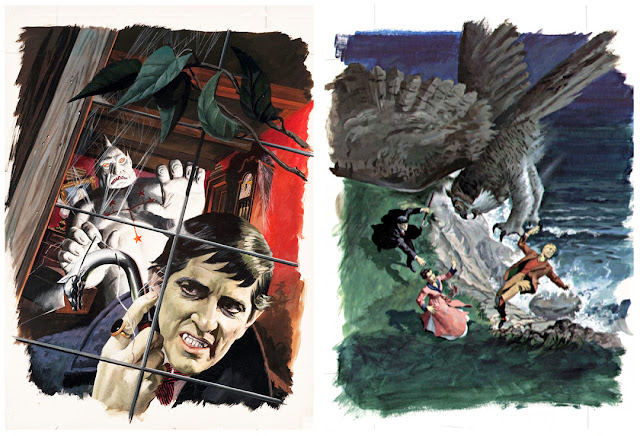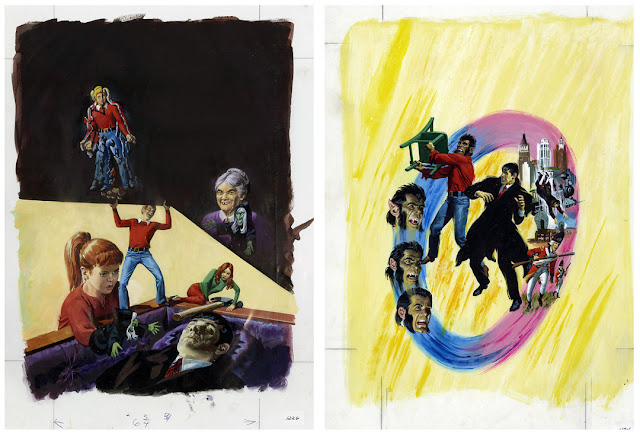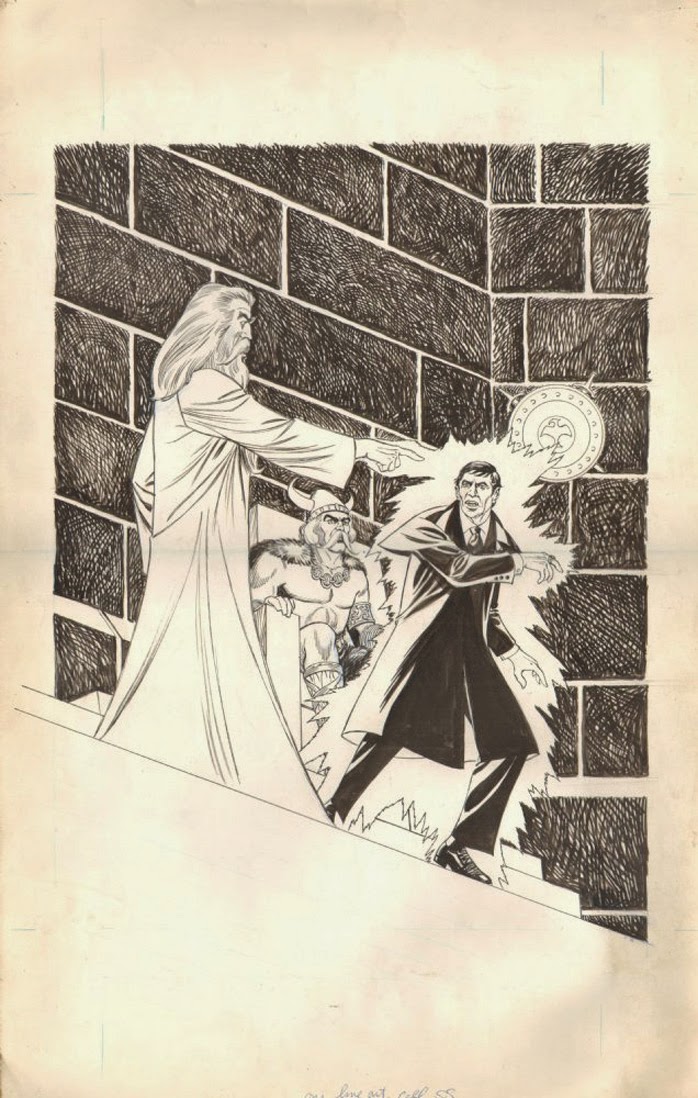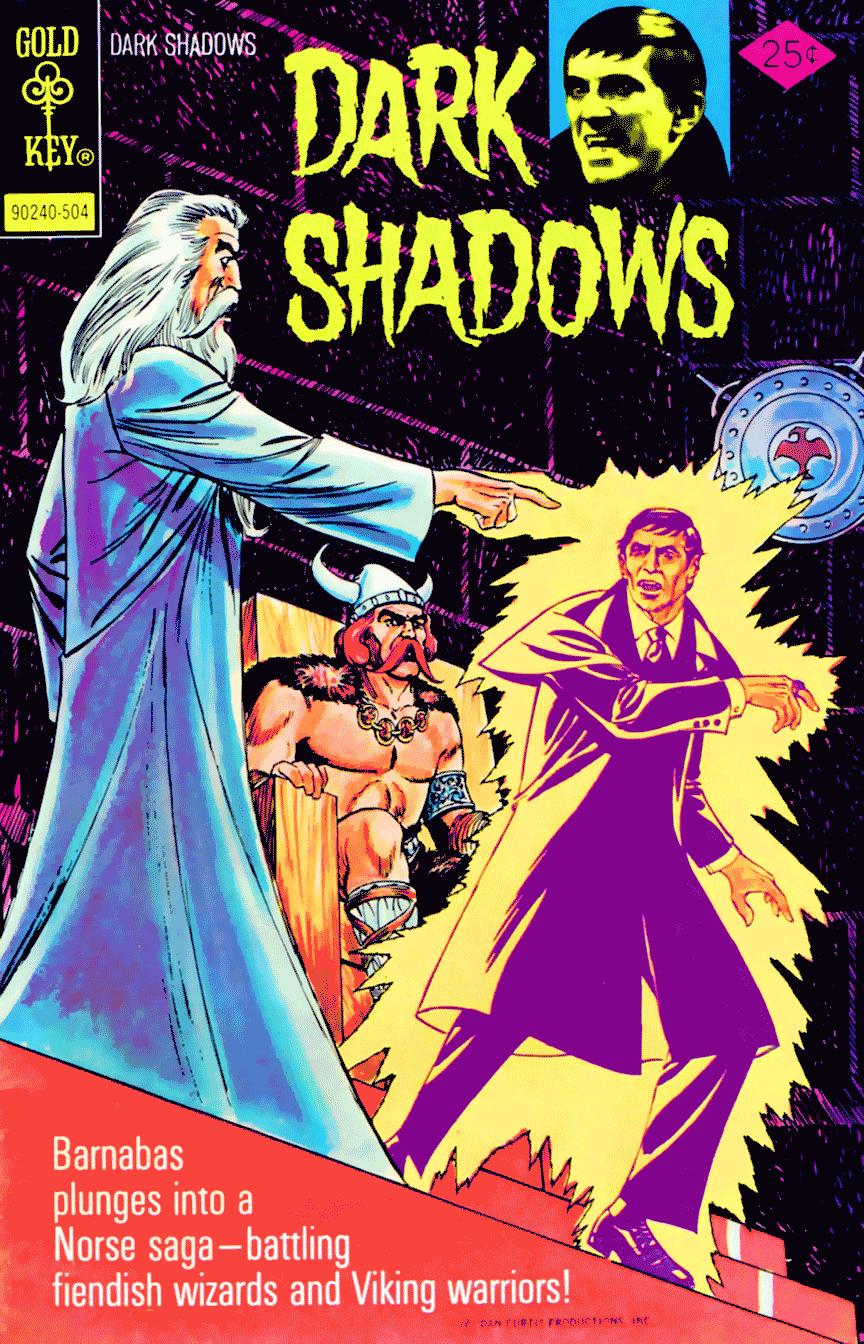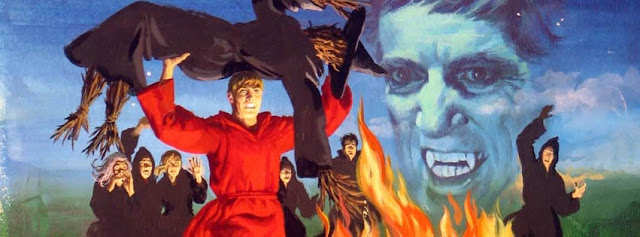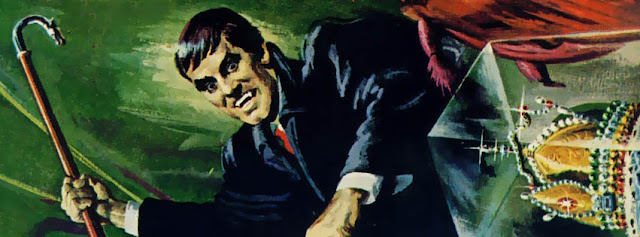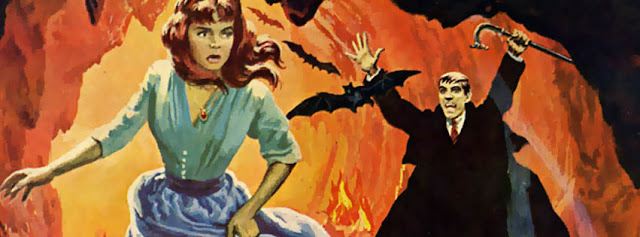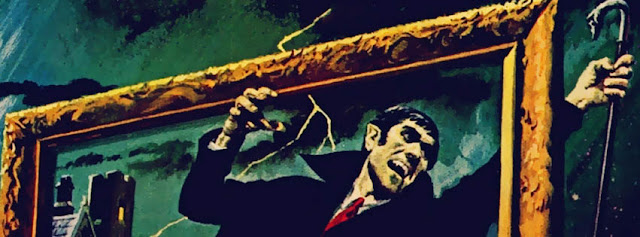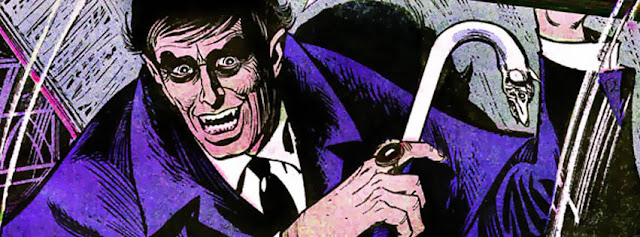Do you remember the time Lara Parker made an appearance on the 1991 DARK SHADOWS "revival" series? No? Well, it sorta happened.
As producer Dan Curtis was making the promotional rounds for the series, he occasionally mentioned the possibility of cast members from the original television series making guest appearances on the new program. In his memoirs
IN AND OUT OF THE SHADOWS, actor David
Selby says he was invited by Curtis to reprise his role of
Quentin Collins on the revival.
"I told Dan that I was too old to
play Quentin, who never ages thanks to the Dorian Grey portrait," he
recounts. While Selby would visit the set of the series to speak with actress
Jean Simmons, he admits he refused the role out of respect for his experiences on the original series.
 |
| Lara Parker/Lara Hoffman. |
The new DARK SHADOWS lasted only twelve episodes, which was hardly enough time to accommodate
any kind of appearance by members of the original cast. (Now that I think about it, Jonathan Frid would have made an
awesome Professor Stokes.) But the opportunities for cameos didn't end with the television series.
As with the show's previous incarnation, the "revival" was accompanied by a comicbook series. Unlike the Gold Key comics published in the 1960s and '70s, though, Innovation's tie-in to the 1991 series was lush, imaginative and created by people with a clear understanding of the property.
And, in the November 1992, issue of the Innovation series,
Lara Parker loaned her likeness to "Lara Hoffman,"
the aunt of
Barbara Steele's "Dr. Julia Hoffman." (Parker is only
two months older than Steele, but whatever.)
Innovation made a splash a few years earlier with an adaption of Anne Rice's
THE VAMPIRE LESTAT. A 12-part mini-series, the comic was a hit and placed Innovation on the industry map. Unfortunately, publishers misinterpreted the success of that book, turning its lushly painted style into a company wide aesthetic. Almost
every book by Innovation was made to look like the Anne Rice adaption, whether if worked with the story or not. When it came to books like
THE MASTER OF RAMPLING GATE (another Rice adaption) and DARK SHADOWS, the style was a perfect fit. With adaptions of properties such as
QUANTUM LEAP and LOST IN SPACE? Not so much. Within a few years, the novelty of
THE VAMPIRE LESTAT had turned into a cliché, and few of Innovation's titles came close to matching the success of its first hit. (I've also heard stories that editors had a passion for cleavage that would have made Hammer Studios blush, routinely kicking back pages to artists with instructions to "SHOW MOAR BOOBZ!" Although the memos were probably phrased a bit more professionally.)
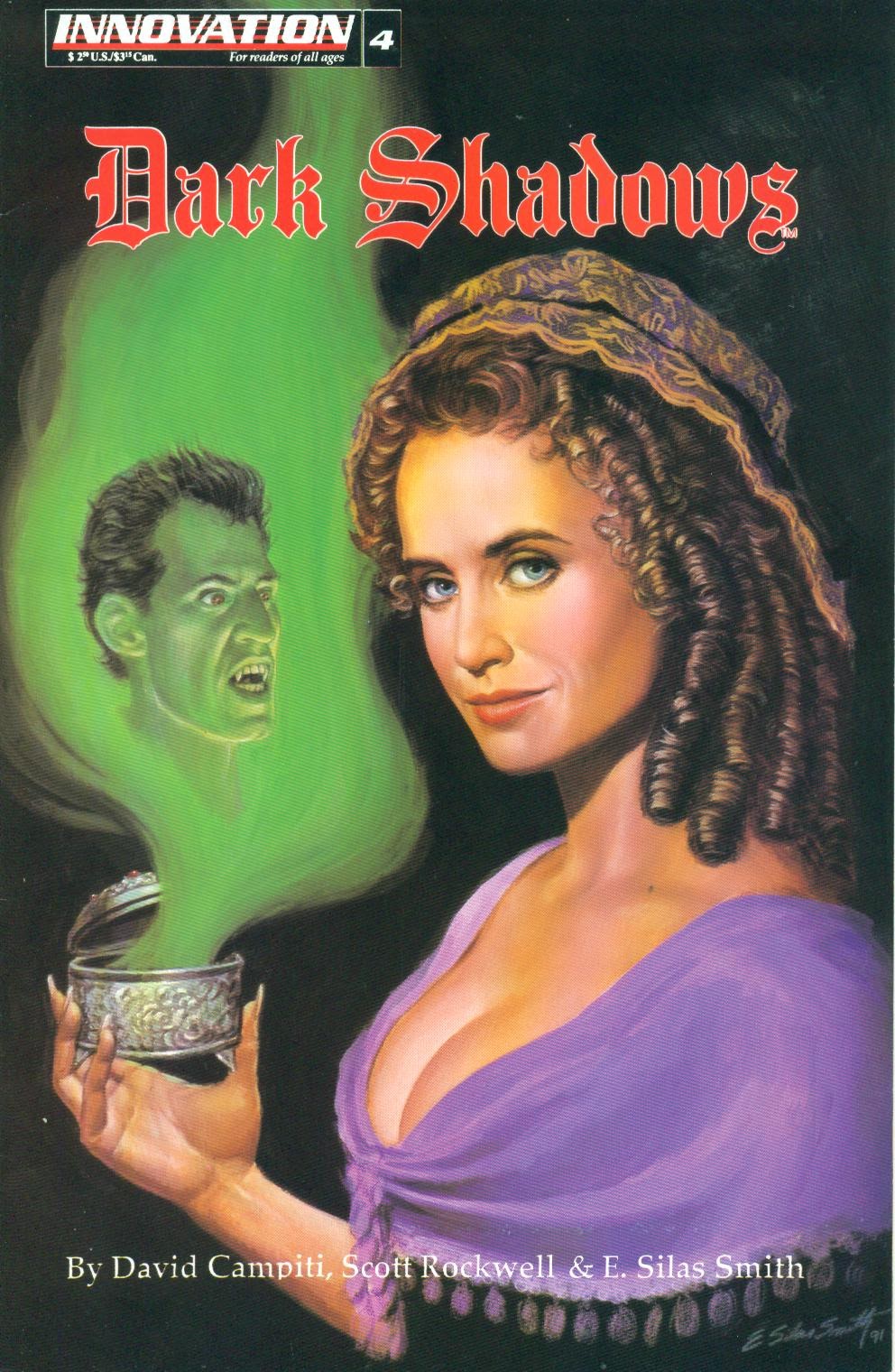
With DARK SHADOWS, Innovation lucked into series that was a good match for its company aesthetic. It helped that the book's writers were willing to take stories in strange new directions, rarely relying on any incarnation of the TV series for guidance. It introduced new villains, explored existing relationships and filled in a few of the gaps created by the television show's rush to introduce Barnabas Collins into the mix. For fans of the show, Innovation's book was required reading at the time.
Unfortunately for all involved, DARK SHADOWS was cancelled in early 1991. A few of the show's actors have made appearances on Big Finish's
terrific line of audio dramas, but the TV series' final episode remains
one of televisions great unresolved cliffhangers. As with Gold Key, Innovation's DARK SHADOWS lived longer than its inspiration. The company completed a pair of four-part series before going out of business in 1993. Sadly, Innovation folded after the ninth issue of DARK SHADOWS, leaving
yet another storyline unfinished to this day.
If you're interested in tracking down this series, all nine issues are inexpensive and easy to find through outlets like Ebay and Amazon. Visit the
DARK SHADOWS WIKIA for details about the individual issues.
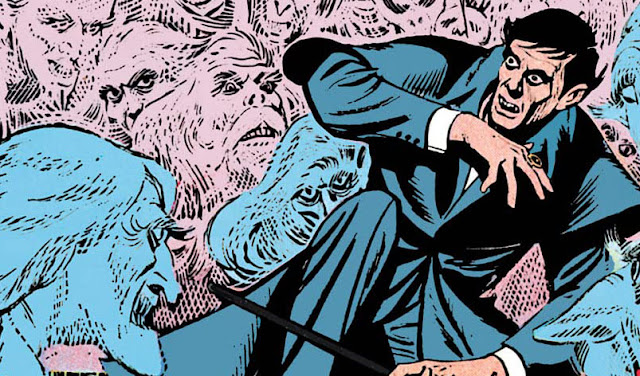
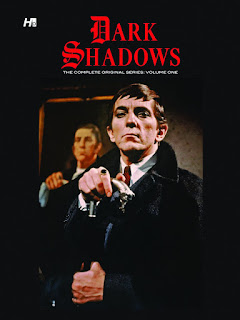 Hermes Press is bringing the first volume of its Dark Shadows series back into print. Back in 2010 the company began collecting the entire Gold Key comic book series into hardback, a collection that eventually spanned five hardcover books, a "best of" collection and a reprint of Gold Key's 1970 Dark Shadows Story Digest one-shot. All of these books have remained available in recent years, except for the first volume of the Gold Key comics collection. At the moment it's selling for $143 on Amazon, which is the cheapest it's been for years. No, really.
Hermes Press is bringing the first volume of its Dark Shadows series back into print. Back in 2010 the company began collecting the entire Gold Key comic book series into hardback, a collection that eventually spanned five hardcover books, a "best of" collection and a reprint of Gold Key's 1970 Dark Shadows Story Digest one-shot. All of these books have remained available in recent years, except for the first volume of the Gold Key comics collection. At the moment it's selling for $143 on Amazon, which is the cheapest it's been for years. No, really.